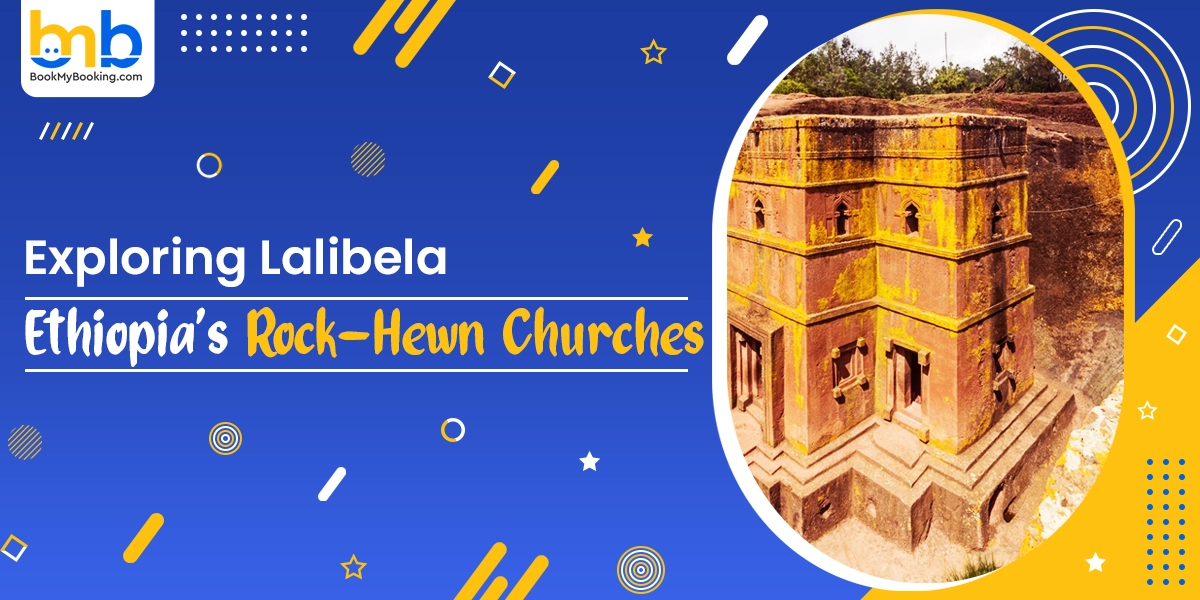Lalibela, a significant figure in Ethiopian history, is celebrated for establishing a Christian capital in Ethiopia during the Zagwe dynasty in the 12th century, a must-include in your Lalibela Travel Guide.
Following the decline of the Aksumite kingdom due to the rise of Muslim powers, Lalibela's reign marked a period of revival for Christianity in the region, characterised by the construction of remarkable rock-hewn churches.
These churches, composed of solid volcanic rock, are not only architectural marvels but also hold intense spiritual significance, comparable to Jerusalem, and serve as a pilgrimage site for Ethiopian Christians.
Lalibela's efforts to assess power and cultivate diplomatic relations, especially with Saladin, helped maintain the relationship with the Ethiopian rock-hewn churches, which have their Coptic roots. His reign's speciality is that Elavan is characteristic of the architectural legacy of remarkable churches, including the cultural protection of the famous Bet Gieorurgeis and Aksumite traditions. Despite these achievements, the Zagway dynasty faced challenges, including the notion of illegality and the internal inheritance thesis, which eventually led to its decline. Lalibela's impact on Ethiopian identity and Christian heritage is profound; their churches stand out as a symbol of faith and resilience for generations. The site is often referred to as a new Holy Land, affirming its relevance in the spiritual landscape of Ethiopia.
History of Lalibela Churches
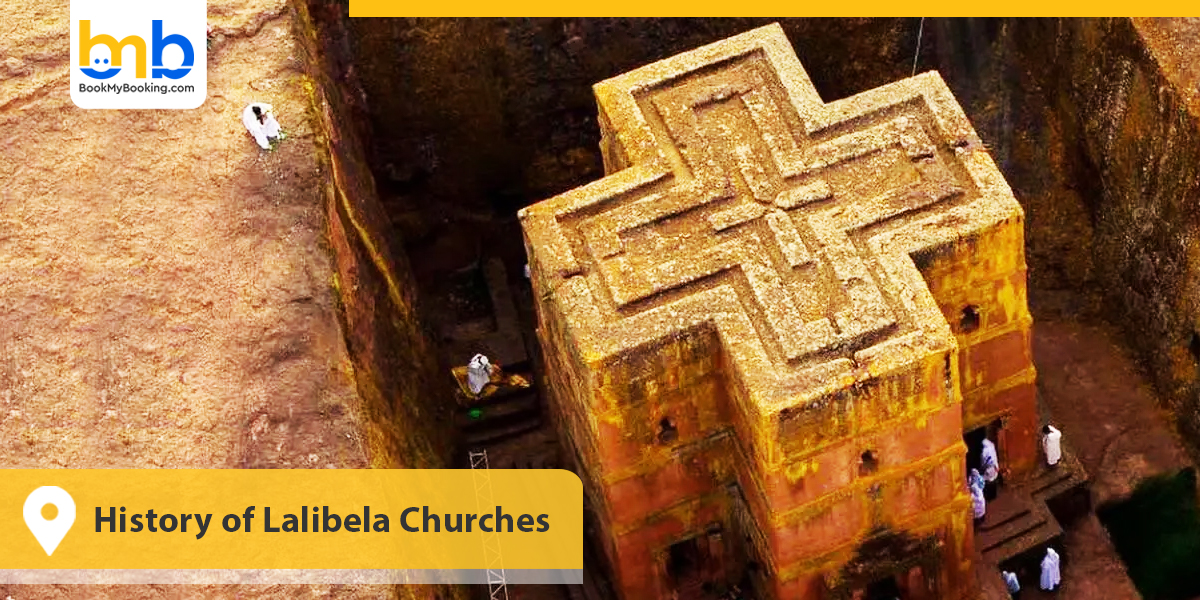
Lalibela's history depicts a religious and pilgrimage centre in north-central Ethiopia. Roha, the capital of the Zagew dynasty for approximately 300 years, was renamed after its distinguished monarch, Lalibela, who, as per the tradition, that was built the 11 monolithic churches for which the place is renowned. Hewn out of solid rock in various styles, the churches were designated as the UNESCO World Heritage site in Lalibela in 1978.
Generally, trenches were excavated in a rectangle, isolating a solid granite block. The block was then carved externally and internally, the world proceeding from the top downward. The churches are arranged in such a way that too in two main groups connected by subterranean passageways. One group, surrounded by a trench 36 feet deep, includes the House of Emmanuel, the House of Mercurios, Abba Labanos, and the House of Gabriel, all carved from a sloping rock terrace, a must-include in your Ethiopia travel guide. The House of Golgotha contains Laibela's tomb, and the House of Mariam is noted for its frescoes. The interiors were hollowed out into naves and given vaulted ceilings.
Ethiopian, Lalibela Orthodox Tewahedo Church
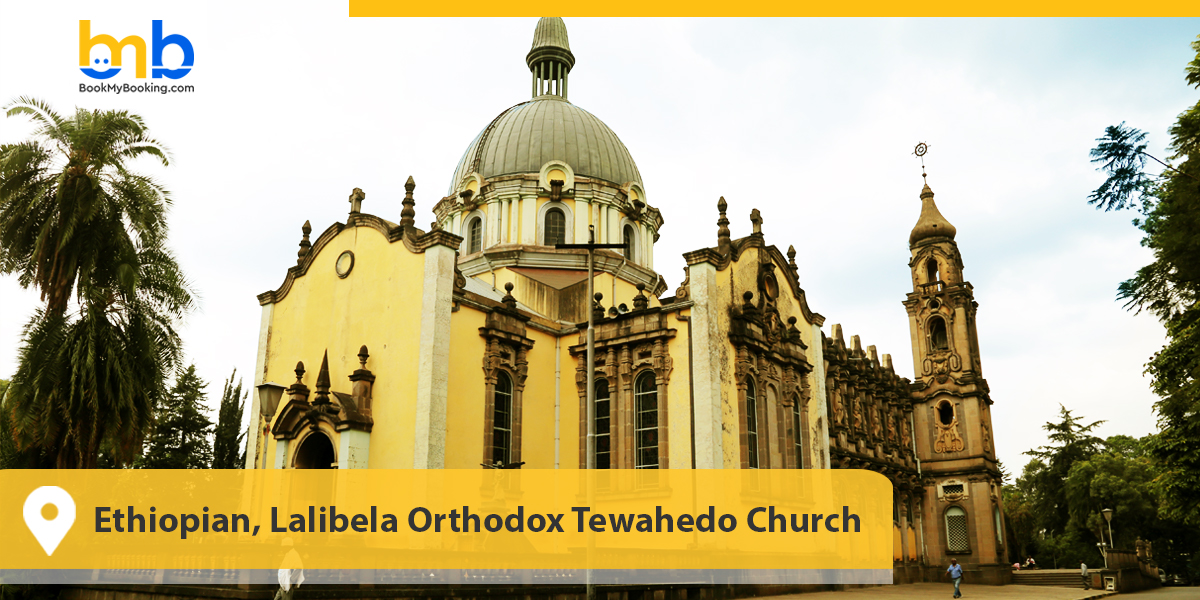
Ethiopia was converted to Christianity by the Ethiopian eunuch, who was baptised by the apostle Philip. The Ethiopian Orthodox rock-hewn Church was initiated on a synodal level in 328 AD. The Church's first bishop was Frumentius, a Syrian by birth, brought up in Ethiopia in the palace of Axum. He returned to Alexandria after being consecrated as bishop by Saint Athanasius. The faithful in Ethiopia call Abba Salama Kassate Berhan, who is Father of Peace and Revealer of Light. 9, Nine saints from the Middle Eastern and Asia Minor migrated to Ethiopia after 150 years and are prominently featured in Ethiopian rock-hewn churches.
They introduced monastic lifestyle, translated various religious literature from Aramaic and Hebrew into the Geez language, and expounded the St Cyril's One Person, One Nature doctrine. Since the schism of 451, the Ethiopian Orthodox Tewahedo Church has shared the same faith with the Coptic Orthodox Church, the Syrian Orthodox Church, the Armenian Apostolic Church, and the Syrian Orthodox Church of India. The Lalibela Churches have suffered dramatically from numerous religious persecutions throughout the centuries.
The Queen's reign, Yodit in the 9th century, lasted for forty years and caused significant damage to the Church's life. The invasion of Mohammed the Left Handed in the 16th century was even more destructive. Again, during the 17th century, the Ethiopian Orthodox Churches suffered persecution from the Jesuit Alphonzo Mendez and his followers. During the fierce five-year struggle against the invasion of Mussolini from 1935 to 1940, several bishops, many priests and thousands of faithful lost their lives. More than 2000 churches were destroyed, and numerous church manuscripts were taken away.
Since 1950, the Ethiopian Orthodox Church has been autocephalous. The Church has 81 canonical books and 14 anaphoras. The language of the divine service is Geez, the ancient language of Ethiopia. Today, however, portions of the liturgy are also rendered in Amharic.
There are seven official fasting periods: (1) all Wednesdays and Fridays, (2) the Lantern fast, (3) the Nenveh fast, (4) the vigils or Gahd of Christmas and Epiphany, (5) the fast of the apostles, (6) the fast of the prophets (7) the fast of the Assumption). The supreme authority in church administration, as well as legislative and judicial matters, belongs to the Holy Synod, which meets twice a year under the chairmanship of His Holiness the Patriarch at the Ethiopian rock-hewn churches. The diocesan archbishop is the chairman of the diocesan parish council. The diocesan archbishop is the chairman of the diocesan parish council. The national parish council meets annually in the patriarchate. Also, under the patriarch's chancery, the Church has two lay clerics entrusted with chanting the Church's offices and teaching in the schools.
Your Ethiopia travel guide must include six clergy training centres and a theological seminary. The current administrative structure has been conducive to both the clergy and the laity meeting the vital needs of all human beings and working together through the respective parish councils to spiritually and socially develop the Church. The Sunday school programme unit is very active.
The Lalibela Orthodox Churches have branches in Sudan, Djibouti, Jerusalem, Europe, and North and South America. Eight bishops serve the Church outside Ethiopia.
Ethiopia Rock-Hewn Churches: A Testament to Sacred Heritage
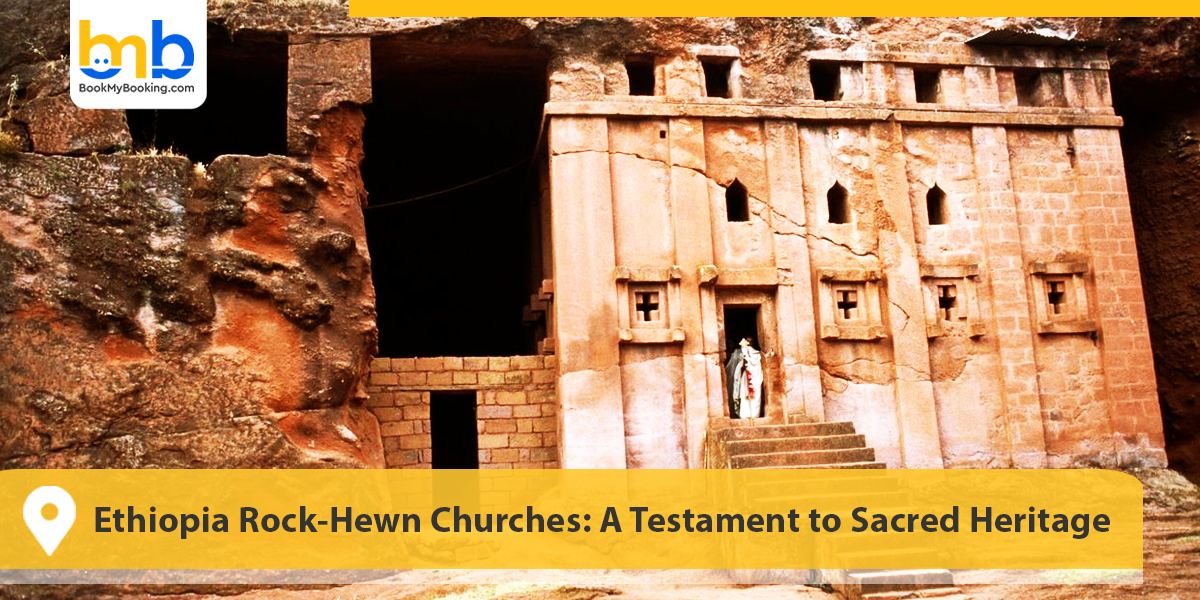
Situated in the highlands of northern Ethiopia, the rock-hewn churches of Lalibela are among the most remarkable religious sites in the world. Carved directly into red volcanic rock in the 12th century, these eleven medieval Lalibela churches were not constructed in the traditional sense; they were instead excavated, forming freestanding monolithic and semi-monolithic structures below ground level. Commissioned by King Lalibela of the Zagwe dynasty, the complex was intended to be a "New Jerusalem" for Ethiopian Christians who could not make the pilgrimage to the Holy Land.
The Ethiopian rock-hewn churches are divided into two main clusters separated by the Jordan River, a symbolic reference ot the biblical river. Bete Giyorgis (Church of Saint George) is among the most iconic, renowned for its perfectly cross-shaped design and stunning preservation. Other notable structures include Bete Medhane Alem, believed to be the largest monolithic church in Lalibela, and Bete Maryam, renowned for its intricate interior decorations and historical significance.
Each church is connected through a maze of narrow tunnels, passageways and courtyards mirroring architectural ingenuity and deep spiritual symbolism. These churches remain active places of worship, attracting pilgrims from across Ethiopia and beyond, particularly during religious festivals such as Genna. Lalibela is a vibrant testament to Ethiopia's rich ancient Christian heritage and profound spiritual devotion.
Designated a UNESCO World Heritage Site in 1978, Lalibela continues to capture historians, architects, and travellers with its mystery, artistry, and enduring sacredness. Visiting Lalibela is a journey through history and a step into a sacred world carved in stone, echoing centuries of faith and cultural pride.
Architecture and Carving Techniques of the Lalibela Churches
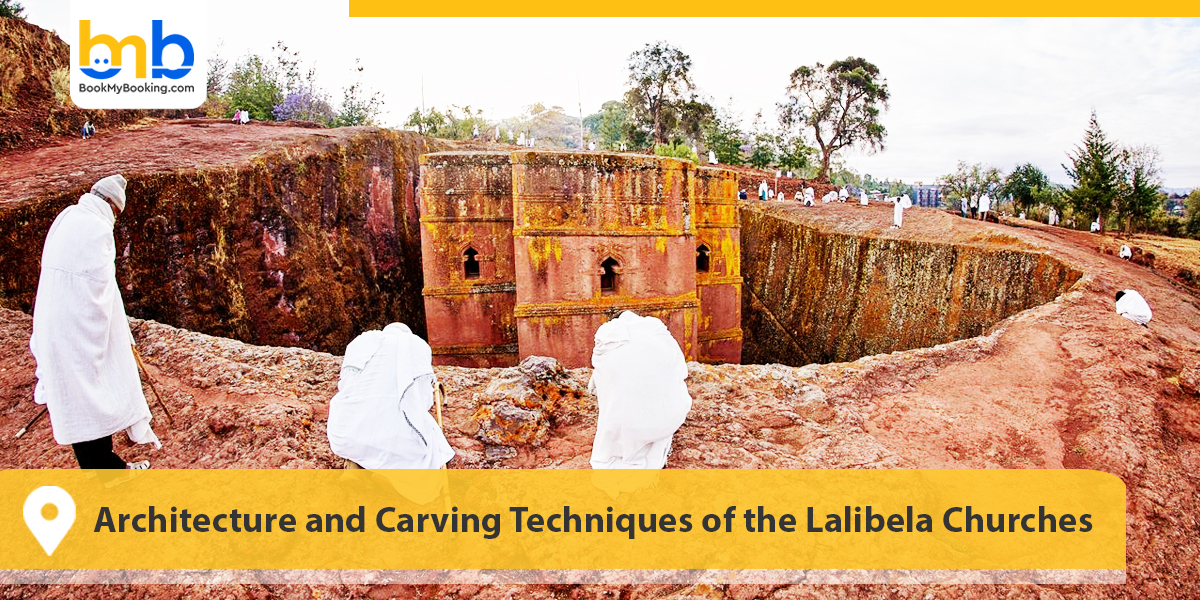
The architecture of the churches in Lalibela is a miracle of medieval engineering and spiritual art. Unlike traditional construction, these churches were made from a block of volcanic tuff rock. This process began by emphasising the grassroots structure and then digging downwards; thus, there is no foundation.
This top-down method requires incredible precision, planning and craftsmanship. Each church features distinct architectural styles drawing influences from Akusmite, Byzantine, and Middle Eastern traditions. Arches, pillars, domes, and windows are delicately carved into the stone, mimicking the forms of wood or brick structures found in the Ethiopian rock-hewn churches.
Some churches that Son Medhene Elem Shoches collided with the Greek Basilicus, while others are spread over a crucifixion design or complex stages. The interior is just as impressive, with window-cracked columns, decorative relief, and symbolic carvings. The artisans used simple devices such as chisels and hammers, led by religious vision and geometric precision.
11 Iconic Churches of Lalibela
The iconic churches of Lalibela, carved directly into volcanic rock in the 12th century, are among the world's most extraordinary religious and architectural achievements. Located in northern Ethiopia, these eleventh-century medieval churches were commissioned by King Lalibela as a symbolic "New Jerusalem" for Ethiopian Christians who could not make a pilgrimage to the Holy Land. Divided into two main clusters and connected by tunnels and trenches, the Lalibela churches represent scenes from the Bible and Christian spirituality.
Bete Medhane Alem (House of the Saviour of the World)
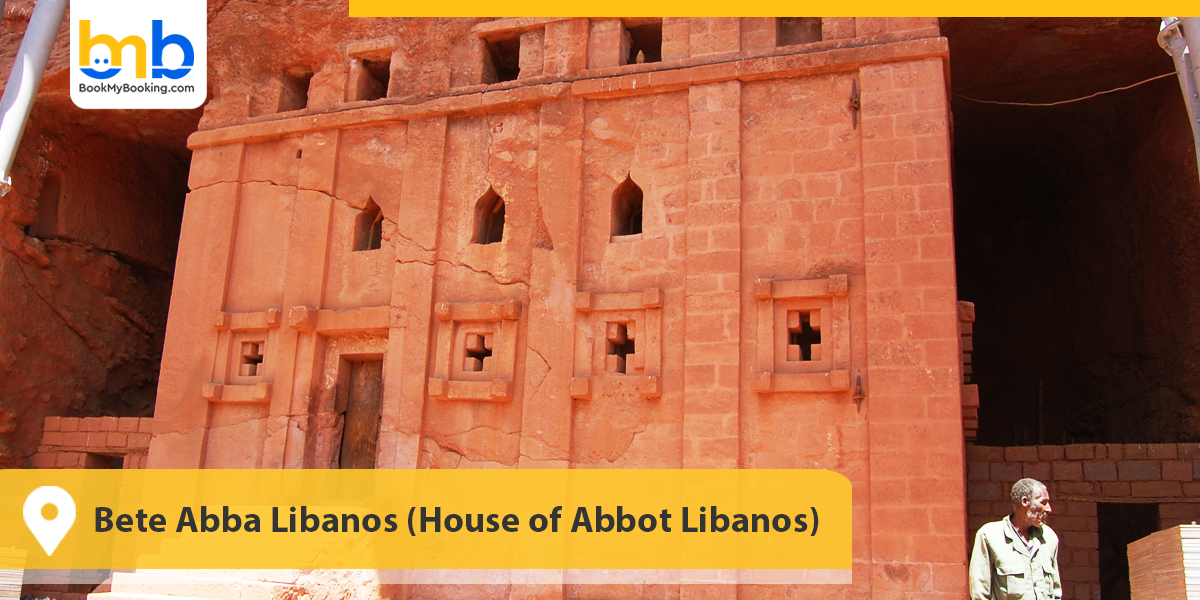
Bete Medhane Alem is the largest monolithic rock-hewn church in the world. Shaped like a Greek basilica, it stands on 34 tall, rectangular pillars, carved entirely from solid volcanic rock. It is believed to house the Lalibela Cross, a highly revered relic in Ethiopian Orthodox churches. Its vast size, columned interior and serene ambience make it a powerful symbol of devotion. The name translates to "Saviour of the World", and the church is associated with Christ the Redeemer. Oligroms consider it one of the holiest spaces in the Lalibela complex.
Bete Maryam (House of Mary)
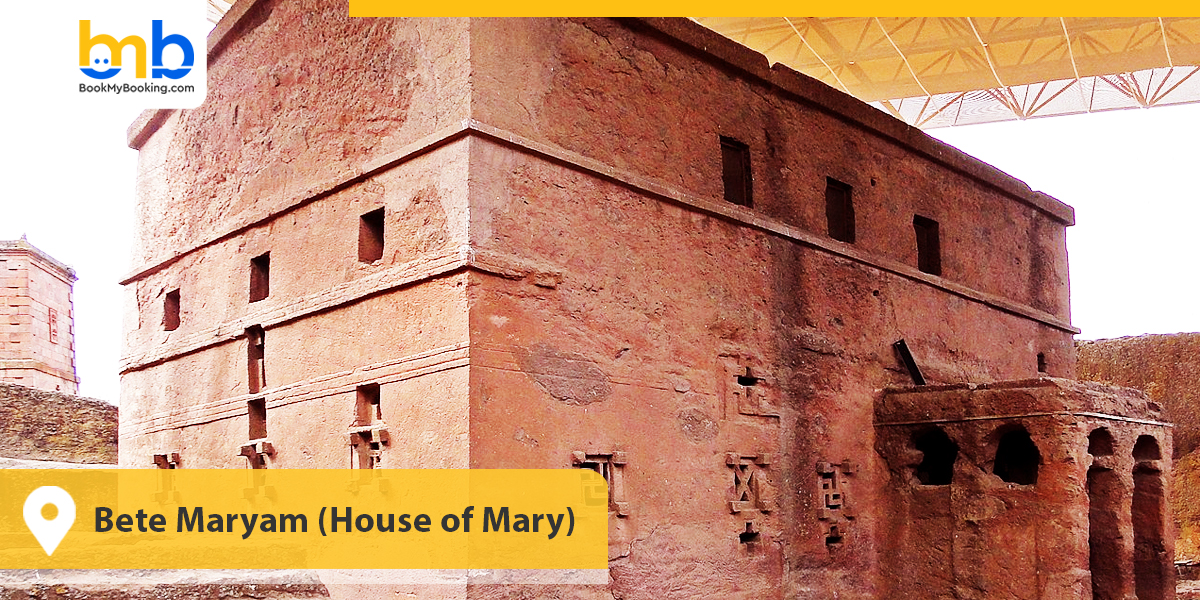
Bete Maryam is considered the oldest Lalibela church complex and possibly the first one constructed by King Lalibela. Dedicated to the Virgin Mary, it's smaller than Bete Medhane Alem but rich in detail and religious symbolism. The walls are decorated with carved frescoes, rosettes, and geometric designs. Indie, a symbolic baptismal pool, is believed to grant blessings and healing. The church's spiritual intimacy and artistic charm make it a visitor's favourite and a must-have in your Ethiopia Travel Guide. It is also where many major ceremonies and festivities are held.
Bete Golgotha (House of Golgotha)
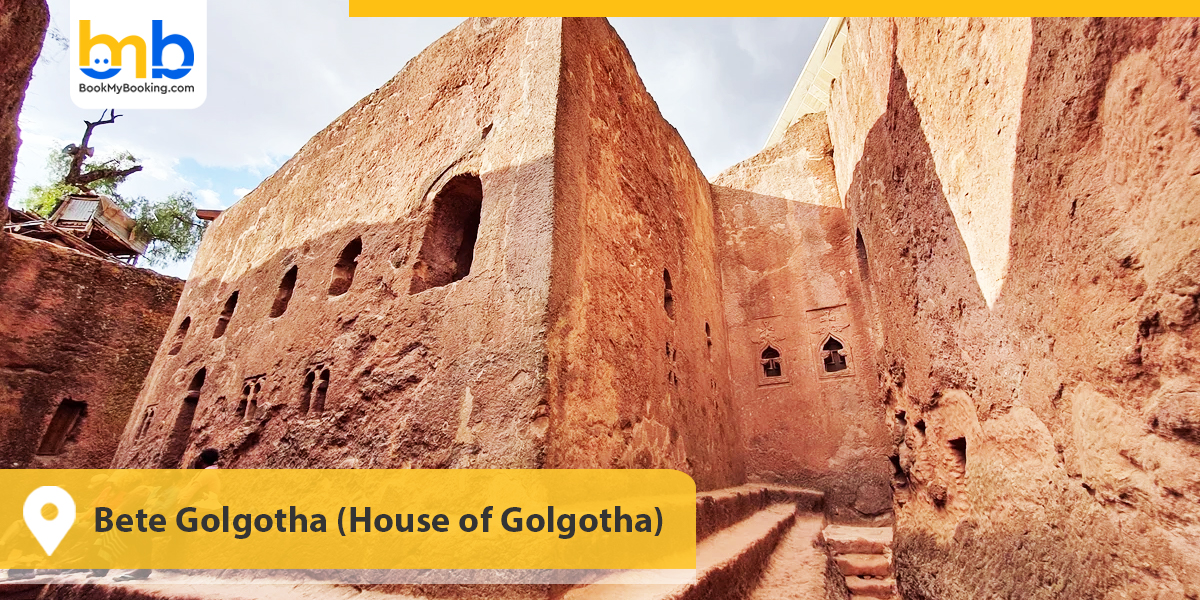
Bete Golgotha is a profoundly sacred site believed to contain the tomb of King Lalibela himself. It is one of the few churches in Laliebla where priests can enter only certain areas. Inside are life-sized reliefs of saints carved directly into the walls, showcasing remarkable artistic skill. The dim lighting and spiritual silence inside add to its mystique. Bete Golgotha is closely linked to Bete Mikael and is part of the Western Christian cluster, representing Christ's crucifixion and resurrection narrative.
Bete Mikael (House of Michael)
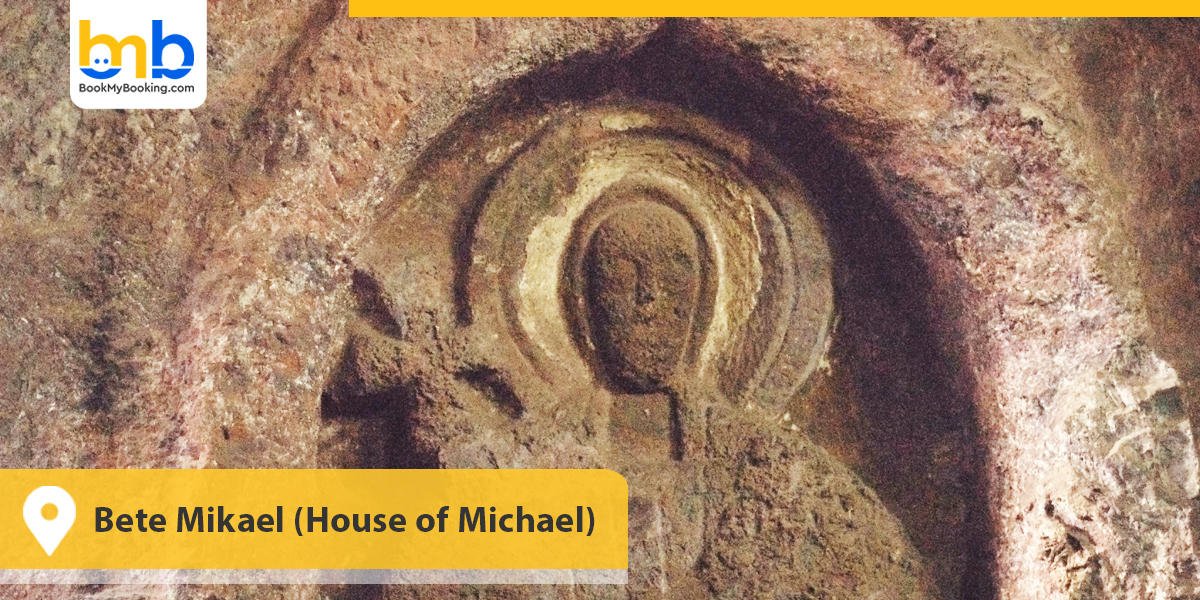
Bete Mikael, also known as Son Dabre Sina, lies next to her son, Calgota, and shares a similar spiritual atmosphere. The Ethiopian rock-hewn churches are set in a throbbing courtyard and are engraved with elegant arches and domes. This Ethiopian Christianity is believed to be dedicated to an honoured person, Archangel Michael.
The connection between Bete Golgotha and Bete Mikael reinforces themes of divine protection and resurrection. The Lalibela churches are often featured in pilgrimage routes and holy processions. Its hidden chambers and mythical aura make it a captivating stop in the complex.
Bete Amanuel (House of Emmanuel)
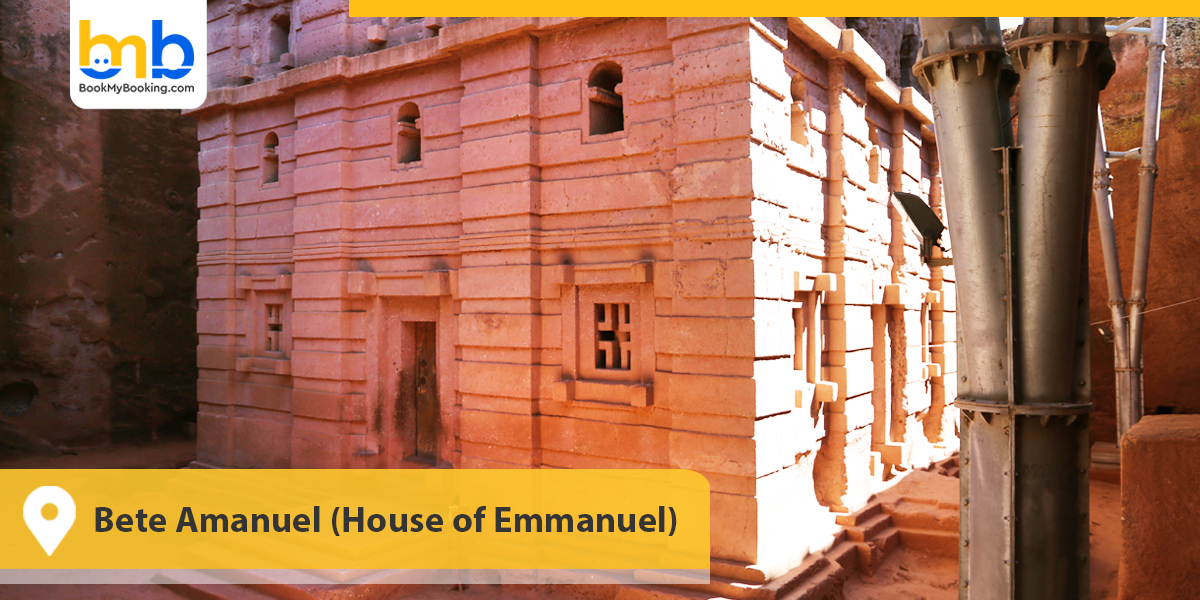
Bete Amanuel is renowned for its precision and Akusmite-style architecture, which mimics layered stone and wood construction, yet its carved form is solid rock. Scholars believe it may have served as a royal chapel for the Zagwe dynasty, per Lalibela's history. Its detailed external facade with carved windows and stepped motifs reflects ancient Ethiopian and Byzantine influences. The interior is serene and sacred with symmetrical pillars and a well-structured layout. Bete Ammanuel is part of the eastern cluster and is admitted for its technical brilliance and architectural refinement, making it a standout among Lalibela's churches.
Bete Qeddus Mercoreus (House of St. Mercurius)
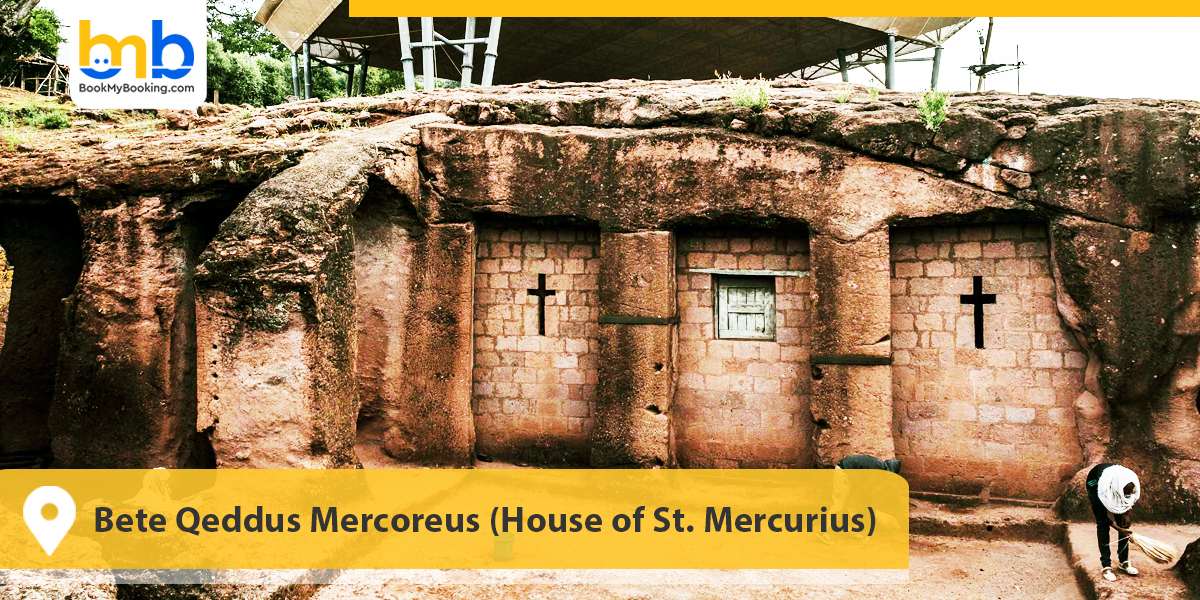
Bete Qeddus Mercoreus is relatively modest in size but steeped in spiritual mystery. It is beeievd ot have been used as a prison or monks' quarters in earlier times. Located in the eastern cluster, the Lalibela church is partially collapsed but still maintains its sacred significance. The discovery of bones inside has led some to associate it with martyrdom or burial. Despite its simplicity, the church offers a powerful reflection space and continues to be a site of devotion. Its name honours St Mercurius, a warrior saint venerated in Orthodox Christianity.
Bete Abba Libanos (House of Abbot Libanos)

The unique semi-monolithic Bete Abba Libanos is partially separated from the rock face and is believed to have been carved by King Lalibela's wife, Queen Meskel Kebra, in a single night with divine assistance. A must-visit holy place to be included in your Lalibela travel guide. This church features beautiful high ceilings, cross-shaped windows, and decorative wall carvings. Its association with humility and sacrifice is evident in its intimate, prayerful environment. Tucked in a serene setting, the church exemplifies spiritual preservation and devotion. It honours Abba Libanos, a beloved Ethiopian saint known for his ascetic life and teachings.
Bete Gabriel Rufael (House of Gabriel and Raphael)
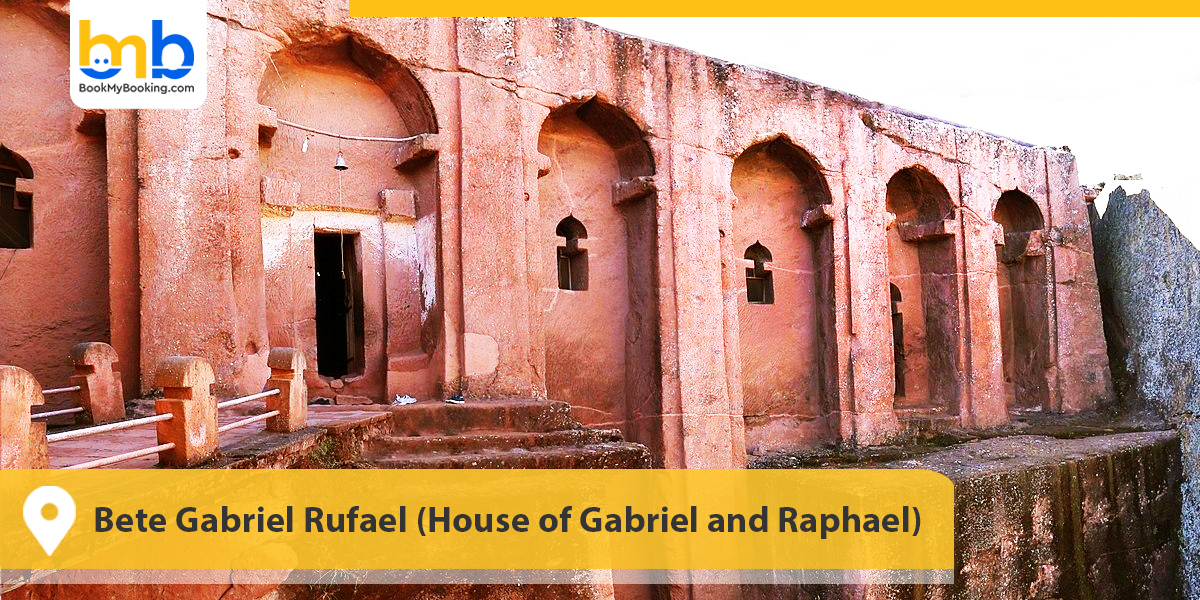
Bete Gabriel Rufael is one of the most architecturally mysterious churches in Lalibela. Located on a hill and connected by a narrow bridge and a tunnel, it's believed to have once served as a royal palace or fortress before being converted into a church. The building's structure features chambers, hidden passageways, and high stone walls, giving it a defensive appearance. Gabriel and Raphael, this church symbolised protection and divine guidance. The journey to its entrance is symbolic of a spiritual passage.
Bete Lehem (House of Bethlehem)
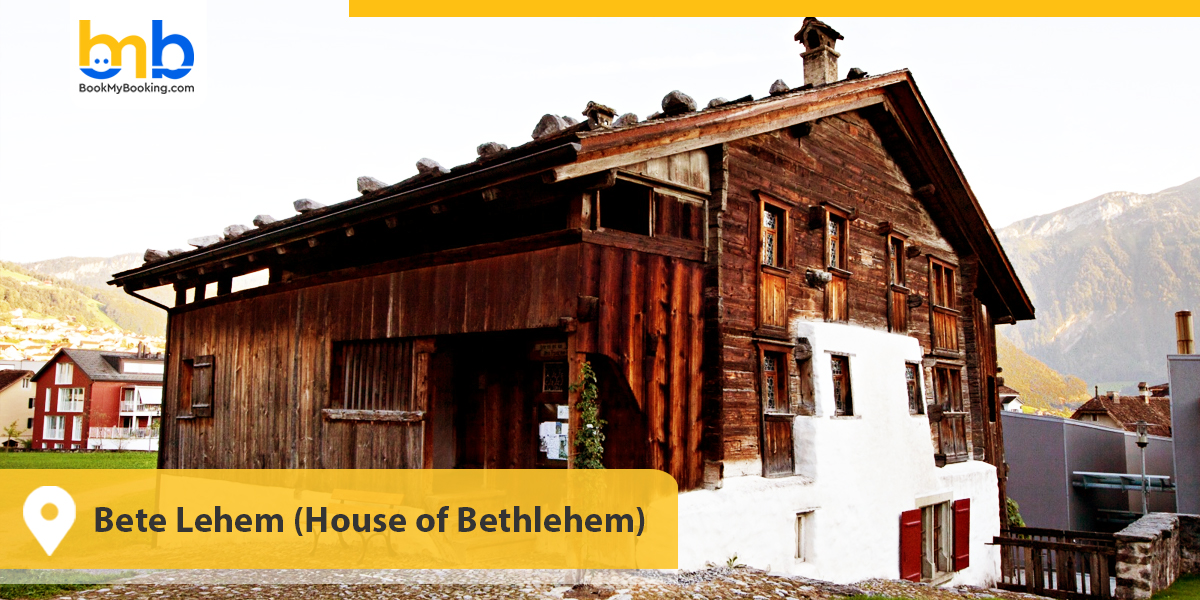
Bete Lehem is a small, intimate chapel near Bete Maryam and is believed to have served as a chapel for the Eucharist. The name means "House of Bread" and is symbolically linked to Christ's body. The spiritual essence of this Ethiopian rock-hewn church is deeply connected to communion and sacred bread rituals. It features finely carved details and acts as a supporting space to larger churches nearby. However, small Bete Lehem holds profound liturgical importance within the church complex and adds a layer of symbolic richness ot the Lalibela pilgrimage.
Bete Danagel (House of the Virgins)
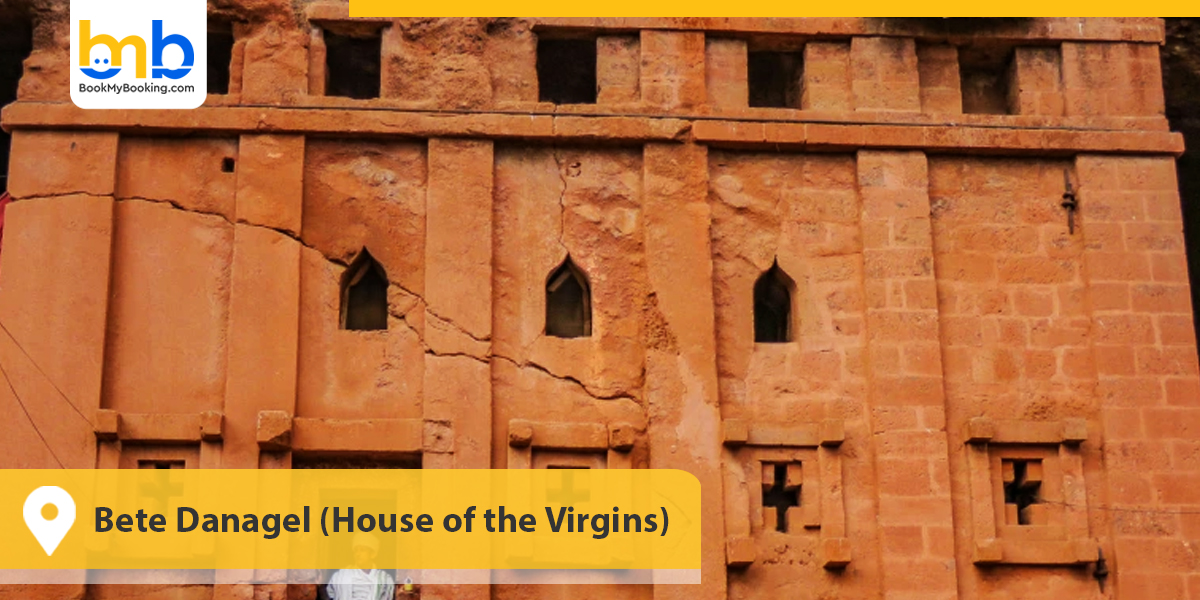
Bete Danagel, also known as the House of the Virgins, is dedicated to the martyred virgins of Antioch. This austere Lalibela church, located near Bete Maryam, features minimal decoration, reflecting the purity and sacrifice associated with its devotion. It is often overlooked but plays a vital role in the spiritual layout of Lalibela. The Ethiopian Orthodox tradition associates the church with chastity, piety, and feminine strength ideals. Pilgrims come here for quiet prayer and reflection, making it a peaceful and sacred stop.
Bete Giyorgis (House of Saint George)
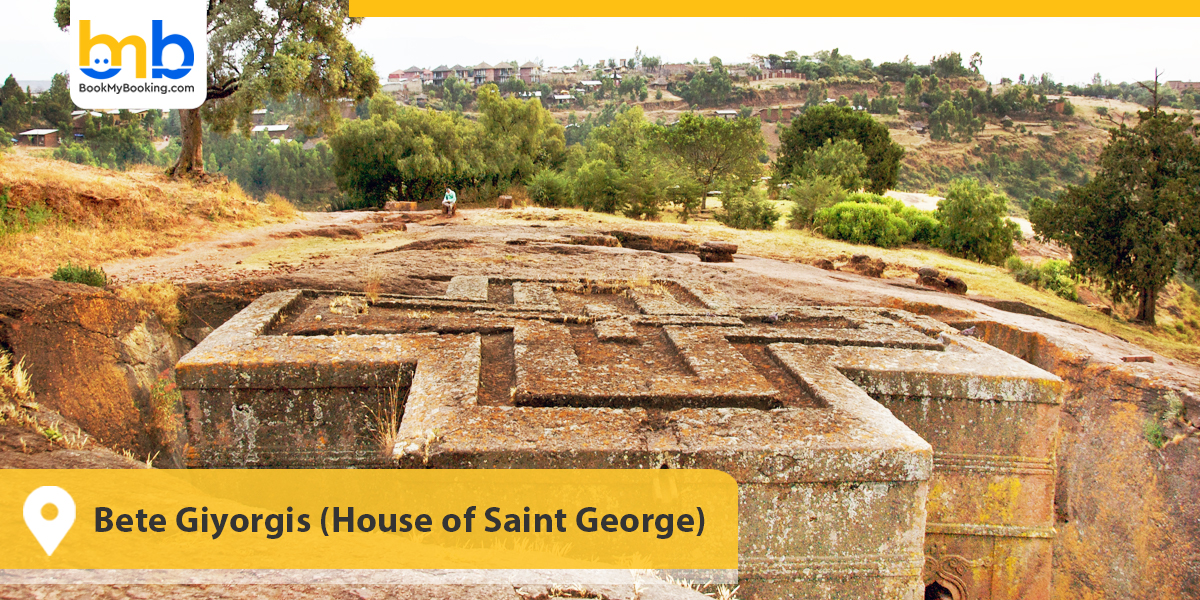
Bete Giyorgis is the most iconic and visually striking of all Lalibela churches. Carved in the shape of a perfect Greek cross, it is set in a deep trench with its roof at ground level. Dedicated to Saint George, the patron saint of Ethiopia, the church is completely monolithic and features beautifully carved windows, doorways and a simple, sacred interior. Legend has it that Saint George appeared to King Laibela, urging him to build this masterpiece. Isolated from the other clusters, Bete Giyorgis exudes powerful spiritual energy and architectural perfection.
Nearby Attractions That You Must Visit
While the Ethiopian rock-hewn churches are the main highlight of Lalibela, the surrounding region also offers many captivating attractions that enrich the cultural and spiritual journey-
- Asheten Maryam Monastery
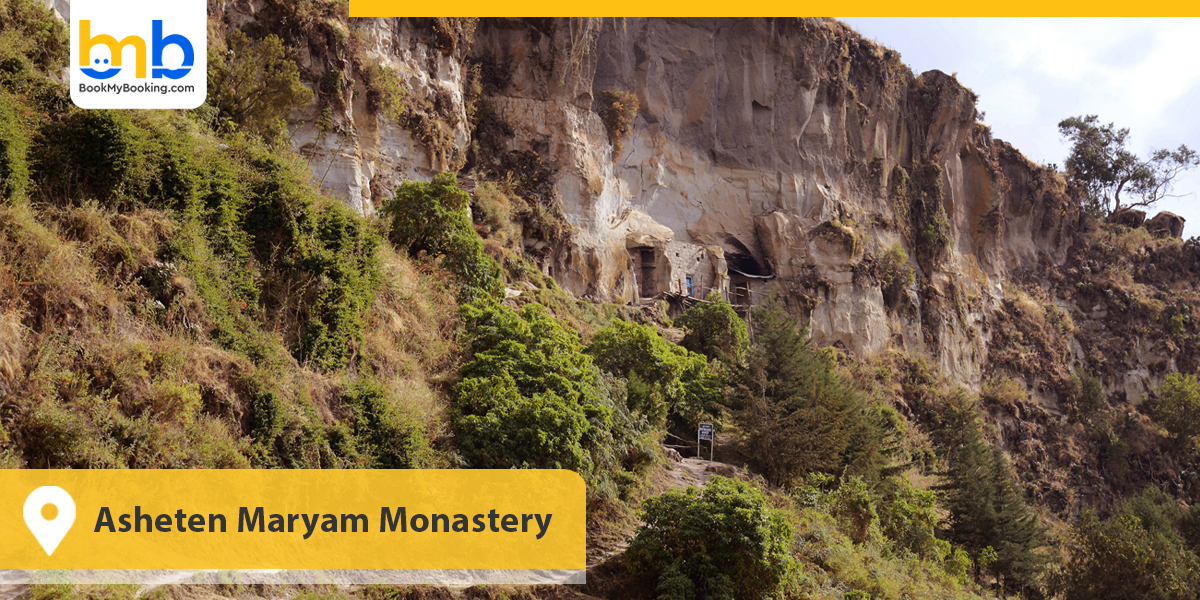
Perched atop a museum above Lalibela, this 12th-century monastery is accessible via a steep but rewarding hike or mule ride. The monastery houses ancient manuscripts and religious artefacts and offers breathtaking panoramic views of the highlands.
- Yemrehanna Kristos Church
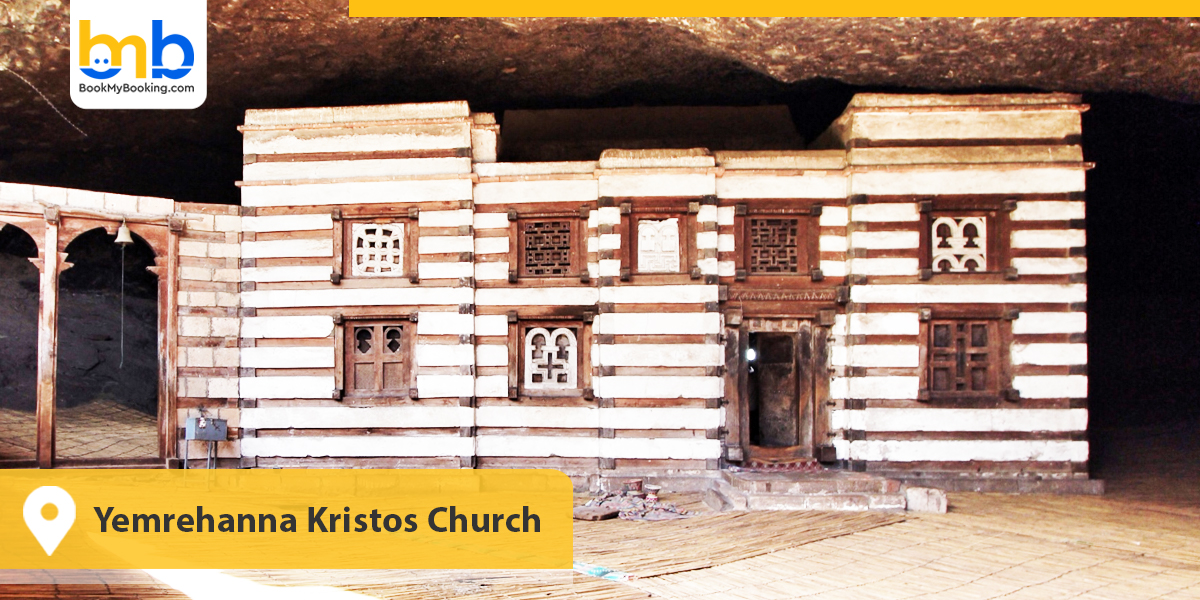
Located about 40 km northeast of Lalibela, this unique cave church predates the Ethiopian rock-hewn churches. Built from wood and stone within a natural cave, it flaunts remarkable Aksumite architecture and a mysterious ambience. It is also the resting place of hundreds of pilgrims whose skeletons remain preserved.
- Lalibela Market
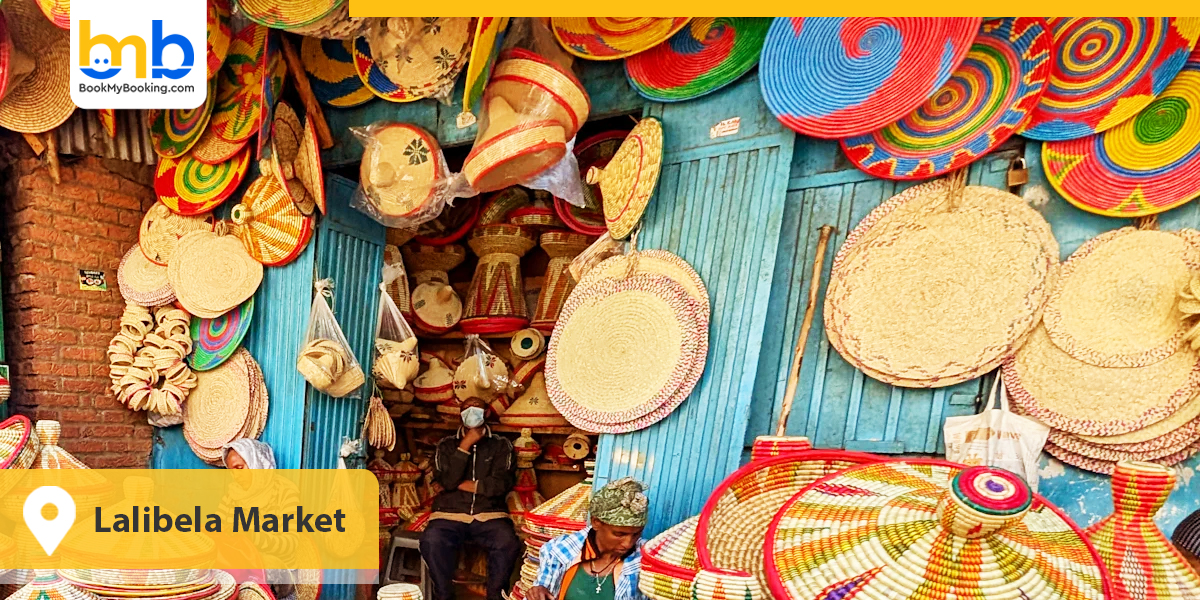
Held every Saturday, this bustling market is a great place to experience local life. Visitors can find traditional crafts, spices, coffee beans, and handmade textiles and interact with local people.
- Mount Abuna Yosef
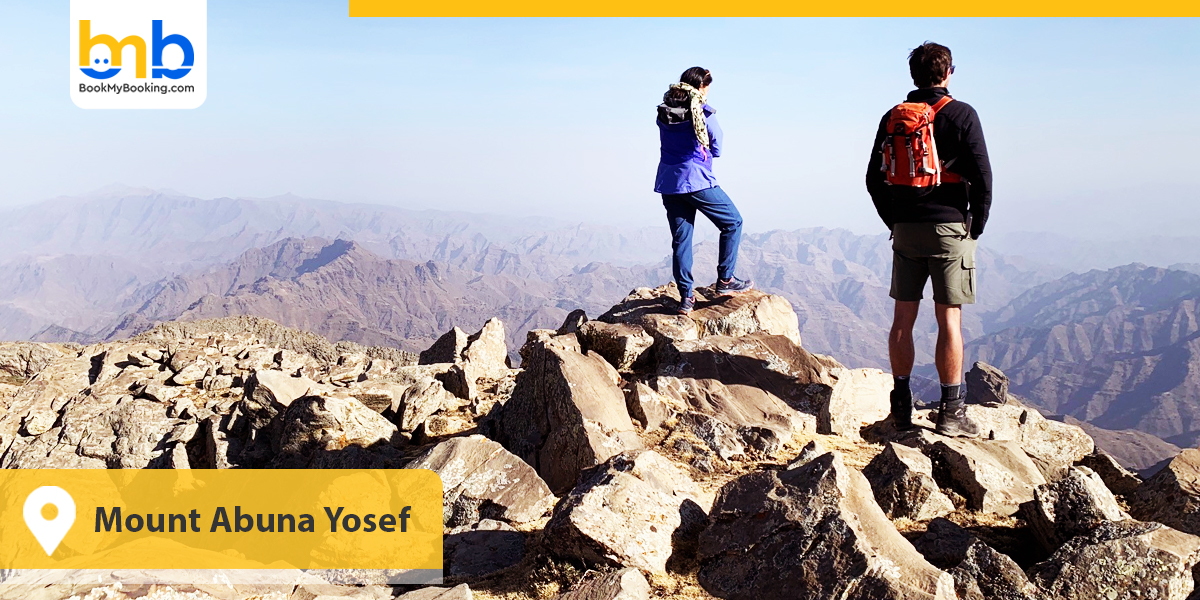
For trekking enthusiasts, this high-altitude mountain offers scenic hikes, endemic wildlife sightings, and overnight eco lodges for nature lovers. It is a must-include destination in your Ethiopia travel guide.
- Local Cultural Villages
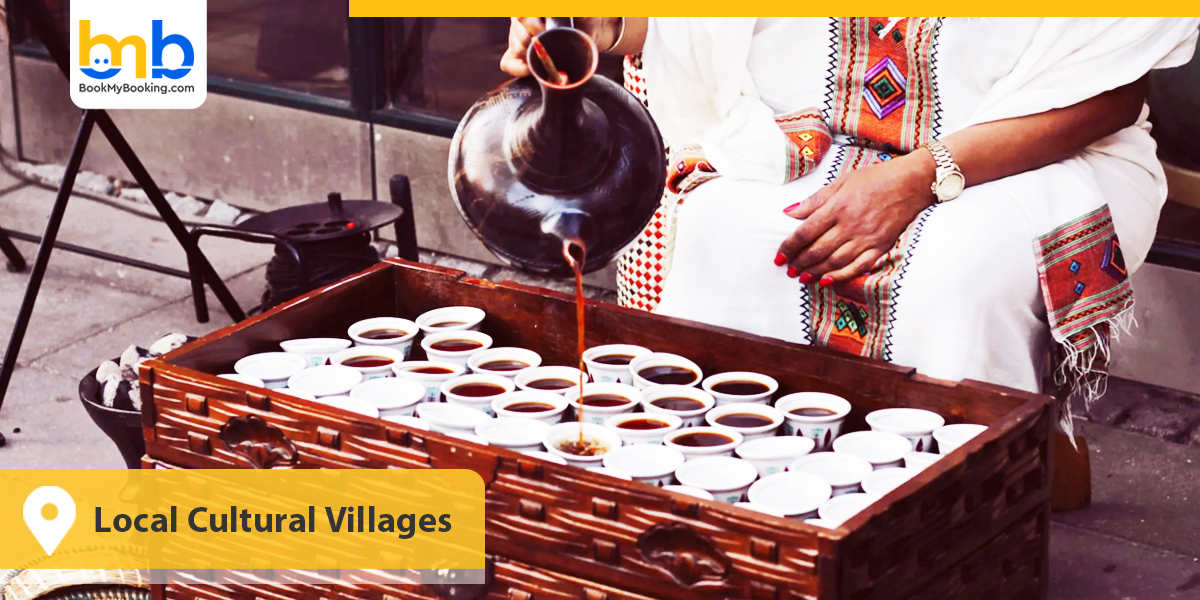
Visiting nearby villages provides insight into the traditional lifestyles of the Amhara people, including their tukul houses, weaving traditions, and coffee ceremonies.
Tips For Visiting Lalibela
Here, we have listed some essential tips for visiting Lalibela
- Dress Modestly
When visiting Lalibela churches, wear conservative clothing that covers your shoulders and knees, as these are active places of worship. Women may also cover their heads with a scarf to show respect. Removing your shoes before entering any church is mandatory, so wear footwear that is easy to remove. Honour the purity of space by talking slowly and avoiding behaviour or flash photography.
- Rent a local guide
In your Ethiopia travel guide, a knowledgeable local guide enhances your experience. Guides provide historical references and insights into religious symbolism, helping you navigate the complex network of tunnels and churches. Many guides are certified and speak fluent English. They also know the best time to visit and can share cultural insights and local legends you won't find in books. A good guide brings Lalibela's churches' rich spiritual history to life.
- Visiting During Religious Festivals
For a truly spiritual experience, visit during major Ethiopian Orthodox Church festivals, such as Genna in January or Timkat. Thousands of white pilgrims descend on Lalibela, creating an unforgettable atmosphere of affection, mantras and procession. The ceremonies are accompanied by traditional drums and priestly rituals, allowing you to experience old Christian traditions that have remained unchanged for centuries.
- Start Early in the Day
Begin your visits early in the morning to avoid crowds and experience the Lalibela churches in peaceful silence. Morning light enhances photography, casting beautiful shadows on the red rock walls. Cooler morning temperatures make walking and exploring more comfortable, especially when climbing ot places like Asheten Maryam Monastery. It is the best time for reflection, meditation and enjoying the sacred ambience.
- Stay Hydrated and Prepare for Altitude
Lalibela is situated at an elevation of around 2,500 meters above sea level. At the same time, the weather rises, and high altitude can cause fatigue or mild altitude sickness while visiting the Ethiopian Orthodox churches. Drink plenty of water, rest frequently, and avoid strenuous activity for the first 24 hours. Bring a refillable bottle, sunscreen, and light snacks for long touring days. Acclimatisation helps ensure a more enjoyable and healthy experience.
What is the Best Time to Visit Lalibela?
Are you winderign what is the best time to visit Lalibela? Let us tell you it is during the dry season, which runs from October to March. During these months, clear blue skies, comfortable temperatures, and minimal rainfall have been experienced, ideal for visiting Lalibela churches, hiking in the surrounding mountains, and participating in cultural programs. The day's temperature is easy, making walking through the submerged paths and tunnels more fun.
Avoid the rainy season from the months of June to early September as heavy rains can make travel difficult, trails slippery and limit your ability to explore comfortably. Some rural roads may become impassable, which could dampen the overall experience. If you prefer lesser crowds, consider visiting in October or November, just after the trains, when the landscape is lush and green. Still, the weather is dry, which is a must-include in your Ethiopia travel guide. These months balance beauty, comfort, and peace for a memorable Lalibela trip.
What makes Ethiopia so special for travellers?

Ethiopia boasts a staggering diversity of landscapes, a kaleidoscope of cultures, and a history that dates back to when our species first stood upright. Suddenly, you have one astonishing travel destination. From the birthplace of the Rastafarian movement, as per Lalibela's history, to the discovery of coffee, here are 10 incredible facts about Ethiopia that you might not know.
- Ancient History
Ethiopia is home to one of the world's oldest civilisations. Sites like Axum, Lalibela, and Gondar reveal a rich legacy of emperors, obelisks and Ethiopia rock-hewn churches that date back thousands of years, offering a deep and immersive historical experience for culture and history lovers.
- Unique Culture
Ethiopia has over 80 ethnic groups, each of which is with its own language, traditions, and dress, which makes it essential to include in your Ethiopia travel guide. The country's cultural diversity offers a rare and authentic glimpse into its vibrant traditions, from the tribal communities of the North to the conservative Christian heritage in the Ohmo Valley.
- Stunning Landscapes
From the dramatic and dynamic cliffs of the Simien Mountains to the alien-like Danakil Depression and lush highlands, Ethiopia offers incredibly varied terrain. These landscapes attract hikers, nature lovers, and adventure seekers seeking raw, untouched natural beauty, home to some of the stunning Lalibela churches.
- Religious Significance
Ethiopia is one of the oldest Christian nations and is deeply rooted in spirituality. Pilgrimages to Ethiopian rock-hewn churches, Timket celebrations, and ancient monasteries on Lake Tana showcase a unique blend of faith, tradition, and living religious practices.
- Remarkable Wildlife
Ethiopia is a hotspot for biodiversity, featuring notable species such as the Gelda Babun, Ethiopian Wolf, and Walia Ibex. The Bell Mountains and Simian Mountains offer extraordinary wildlife experiences for enthusiasts and provide ecotourism opportunities for nature lovers.
Conclusion
The discovery of Ethiopia’s rock-hewn churches is a journey to Ethiopia's spiritual and architectural heart. These are amazing monuments, direct stone carvings, embodying confidence, history, and an intricate mix of artistry. Each church tells a story of devotion and flexibility, offering visitors a glimpse into a sacred past that still thrives. A mysterious landscape and lively culture surround Lalibela. It is not just a destination - it is a transformation experience that associates travellers with one of the most unique and permanent expressions of human creativity and faith, which should be included in your Ethiopia Travel Guide.
 Indian Rupee
Indian Rupee Pound Sterling
Pound Sterling UAE Dirham
UAE Dirham US Dollar
US Dollar Afghanis
Afghanis Algerian Dinar
Algerian Dinar Angolan Kwanza
Angolan Kwanza Argentine Pesos
Argentine Pesos Armenian Dram
Armenian Dram Aruban Florin
Aruban Florin Australian Dollar
Australian Dollar Azerbaijani Manat
Azerbaijani Manat Bahamian Dollars
Bahamian Dollars Bahraini Dinar
Bahraini Dinar Baht
Baht Balboa
Balboa Bangladeshi Taka
Bangladeshi Taka Barbados Dollars
Barbados Dollars Belarusian Rubles
Belarusian Rubles Belize Dollars
Belize Dollars Bermuda Dollars
Bermuda Dollars Bhutanese ngultrum
Bhutanese ngultrum Bolivares Fuertes
Bolivares Fuertes Bolivianos
Bolivianos Brazilian Reais
Brazilian Reais Brunei Dollars
Brunei Dollars Bulgarian Leva
Bulgarian Leva Burundian Franc
Burundian Franc Cambodian Riels
Cambodian Riels Canadian Dollar
Canadian Dollar Cape Verdean Escudo
Cape Verdean Escudo Cayman Islands Dollars
Cayman Islands Dollars Central African CFA franc
Central African CFA franc CFP Franc
CFP Franc Chilean Pesos
Chilean Pesos Colombian Pesos
Colombian Pesos Colón
Colón Colones
Colones Comorian Franc
Comorian Franc Congolese Franc
Congolese Franc Convertible Marka
Convertible Marka Cordobas
Cordobas Cuban Pesos
Cuban Pesos Danish Krone
Danish Krone Denars
Denars Dinars
Dinars Djiboutian Franc
Djiboutian Franc Dominican Pesos
Dominican Pesos Dong
Dong East Caribbean Dollars
East Caribbean Dollars Egyptian Pounds
Egyptian Pounds Eritrean Nakfa
Eritrean Nakfa Ethiopian Birr
Ethiopian Birr Euro
Euro Falkland Islands Pounds
Falkland Islands Pounds Fijian Dollars
Fijian Dollars Forint
Forint Gambian Dalasi
Gambian Dalasi Georgian Lari
Georgian Lari Ghanaian Cedi
Ghanaian Cedi Gibraltar Pounds
Gibraltar Pounds Guarani
Guarani Guinean Franc
Guinean Franc Guyanese Dollars
Guyanese Dollars Haitian Gourde
Haitian Gourde Hong Kong Dollars
Hong Kong Dollars Hryvnia
Hryvnia Icelandic Krona
Icelandic Krona Indonesian Rupiahs
Indonesian Rupiahs Iranian Rials
Iranian Rials Iraqi Dinar
Iraqi Dinar Jamaican Dollars
Jamaican Dollars Jordanian Dinar
Jordanian Dinar Kenyan Shilling
Kenyan Shilling Kips
Kips Koruny
Koruny Krone
Krone Kuna
Kuna Kuwaiti Dinar
Kuwaiti Dinar Lati
Lati Lebanese Pounds
Lebanese Pounds Leke
Leke Lempiras
Lempiras Lesotho Loti
Lesotho Loti Liberian Dollars
Liberian Dollars Libyan Dinar
Libyan Dinar Lira
Lira Litai
Litai Macanese Pataca
Macanese Pataca Malagasy Ariary
Malagasy Ariary Malawian Kwacha
Malawian Kwacha Malaysian Ringgit
Malaysian Ringgit Maldivian Rufiyaa
Maldivian Rufiyaa Mauritanian Ouguiya
Mauritanian Ouguiya Mauritian Rupee
Mauritian Rupee Meticais
Meticais Mexican Pesos
Mexican Pesos Moldovan Leu
Moldovan Leu Moroccan Dirham
Moroccan Dirham Myanmar Kyat
Myanmar Kyat Nairas
Nairas Namibian Dollars
Namibian Dollars Nepali Rupee
Nepali Rupee Netherlands Antillean Guilder
Netherlands Antillean Guilder New Dollars
New Dollars New Lei
New Lei New Shekels
New Shekels New Zealand Dollars
New Zealand Dollars North Korean Won
North Korean Won Nuevos Soles
Nuevos Soles Omani Rial
Omani Rial Pakistani Rupees
Pakistani Rupees Papua New Guinean Kina
Papua New Guinean Kina Philippine peso
Philippine peso Pula
Pula Qatari Rials
Qatari Rials Quetzales
Quetzales Rand
Rand Russian Rubles
Russian Rubles Rwandan Franc
Rwandan Franc Samoan Tala
Samoan Tala Sao Tomean Dobras
Sao Tomean Dobras Saudi Riyals
Saudi Riyals Seychellois Rupees
Seychellois Rupees Shillings
Shillings Sierra Leonean Leone
Sierra Leonean Leone Singapore Dollars
Singapore Dollars Solomon Islands Dollars
Solomon Islands Dollars Soms
Soms South Korean Won
South Korean Won Sri Lankan Rupees
Sri Lankan Rupees St. Helena Pounds
St. Helena Pounds Sudanese pound
Sudanese pound Sums
Sums Suriname Dollars
Suriname Dollars Swazi Lilangeni
Swazi Lilangeni Swedish Krona
Swedish Krona Switzerland Francs
Switzerland Francs Syrian Pounds
Syrian Pounds Tajikistani Somoni
Tajikistani Somoni Tanzanian Shilling
Tanzanian Shilling Tenge
Tenge Tongan Paanga
Tongan Paanga Trinidad & Tobago Dollars
Trinidad & Tobago Dollars Tugriks
Tugriks Tunisian Dinar
Tunisian Dinar Turkmenistani Manat
Turkmenistani Manat Ugandan Shilling
Ugandan Shilling Uruguayo Pesos
Uruguayo Pesos Vanuatu Vatu
Vanuatu Vatu West African CFA franc
West African CFA franc Yemeni Rials
Yemeni Rials Yen
Yen Zambian Kwacha
Zambian Kwacha Zlotych
Zlotych


